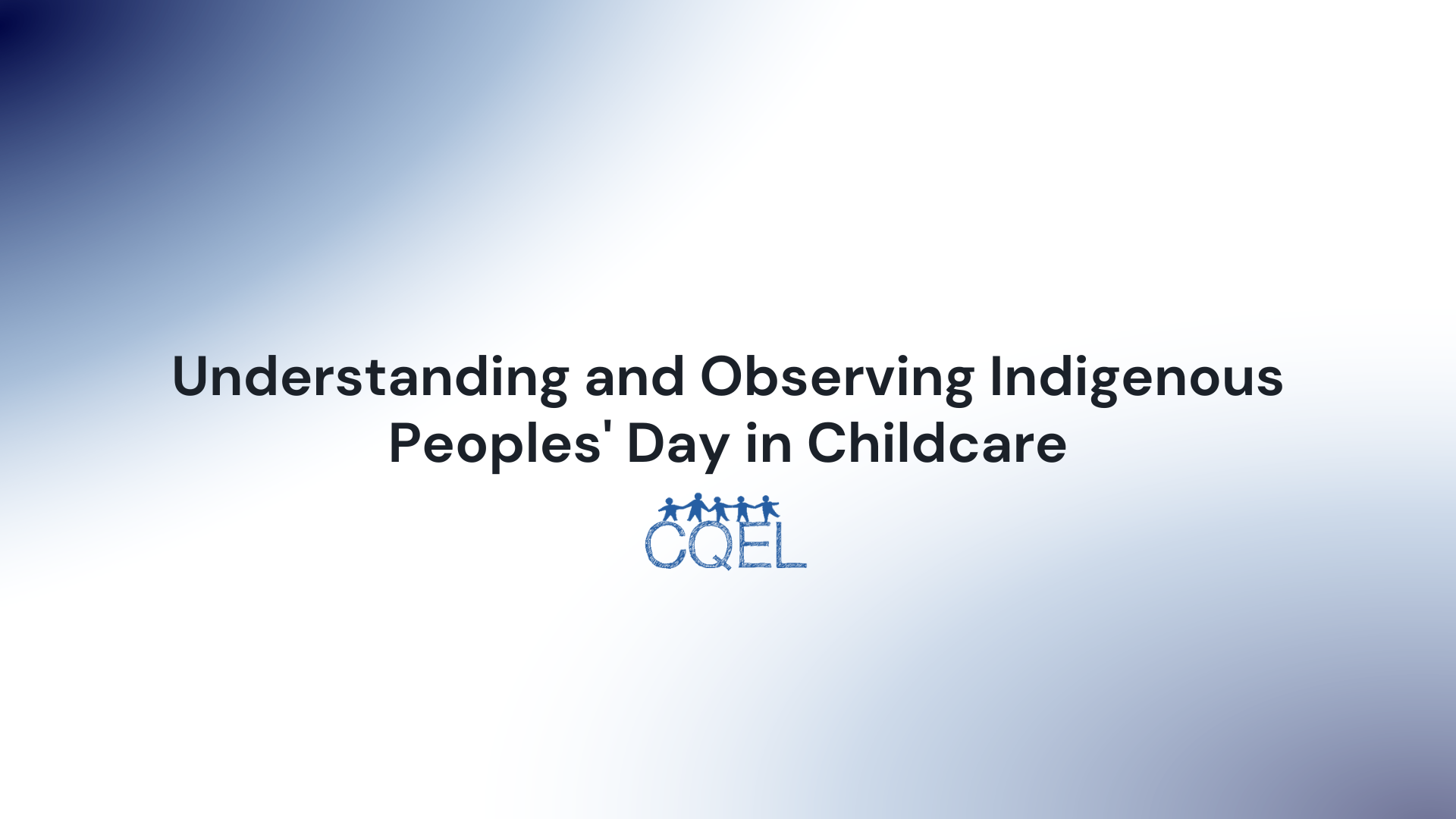Understanding and Observing Indigenous Peoples' Day in Childcare
Best practices for childcare providers can understand and observe Indigenous Peoples' Day in their childcare centers, and provide resources for further learning and exploration.

Indigenous Peoples' Day is a holiday that celebrates Indigenous peoples' history, culture, and contributions and acknowledges the past and ongoing injustices they have endured. It is an important day to educate children about indigenous peoples' history and culture and foster a greater understanding and respect for their contributions to society. This post will outline ways in which childcare providers can understand and observe Indigenous Peoples' Day in their childcare centers and provide resources for further learning and exploration.
Understanding Indigenous Peoples' Day
Indigenous Peoples' Day is observed on the second Monday in October, coinciding with Columbus Day in the United States. However, while Columbus Day has been a federal holiday since 1937, Indigenous Peoples' Day is a relatively new observance. It was first proposed in 1977 at a United Nations conference, and the first Indigenous Peoples' Day was celebrated in Berkeley, California, in 1992. Since then, many cities and states have officially recognized Indigenous Peoples' Day, which is celebrated in various ways across the United States and worldwide.
Observing Indigenous Peoples' Day in Childcare
- Educate Yourself and Your Staff: Before teaching children about indigenous cultures, educating yourself and your staff about the history and current issues facing indigenous peoples is important. There are many resources available online and in libraries that provide accurate and respectful information about indigenous cultures.
- Incorporate Indigenous Cultures into the Curriculum: Incorporate books, activities, and lessons about indigenous cultures into your curriculum. For example, you could read books about indigenous peoples, create art inspired by indigenous artists, or learn about indigenous traditions and customs.
- Invite Indigenous Speakers or Performers: If possible, invite indigenous speakers or performers to your childcare center to share their knowledge and experiences with the children. This can provide a valuable and authentic learning experience for the children.
- Acknowledge the Land: Teach children about the concept of land acknowledgment and acknowledge the indigenous peoples who originally inhabited the land where your childcare center is located.
- Be Respectful and Mindful: It is important to approach the topic of indigenous cultures with respect and mindfulness. Avoid cultural appropriation and stereotyping, and focus on creating a positive and inclusive learning environment.
Resources
- National Museum of the American Indian: The NMAI offers a variety of online resources for educators, including lesson plans, reading lists, and activities. NMAI - Educators
- Native Knowledge 360°: NK360° is an initiative of the NMAI that provides educational materials and teacher training that incorporate Native narratives, more comprehensive histories, and accurate information to enlighten and inform teaching and learning about Native America. NK360°
- Indigenous Peoples' Day Toolkit: The Indigenous Peoples' Day Toolkit is a resource created by the Indigenous Solidarity Network that provides resources for understanding and observing Indigenous Peoples' Day. Indigenous Peoples' Day Toolkit
- Teaching Tolerance: Teaching Tolerance offers a variety of resources for educators to teach about indigenous peoples and cultures in a respectful and accurate way. Teaching Tolerance - Indigenous Peoples
Understanding and observing Indigenous Peoples' Day in childcare centers is an important step toward fostering a greater understanding and respect for Indigenous cultures. By educating ourselves and our children about indigenous peoples' history, traditions, and contributions, we can work towards a more inclusive and just society. Additionally, resources such as those provided by the NK360°, the Indigenous Solidarity Network, and Teaching Tolerance can provide valuable guidance and support for educators.
